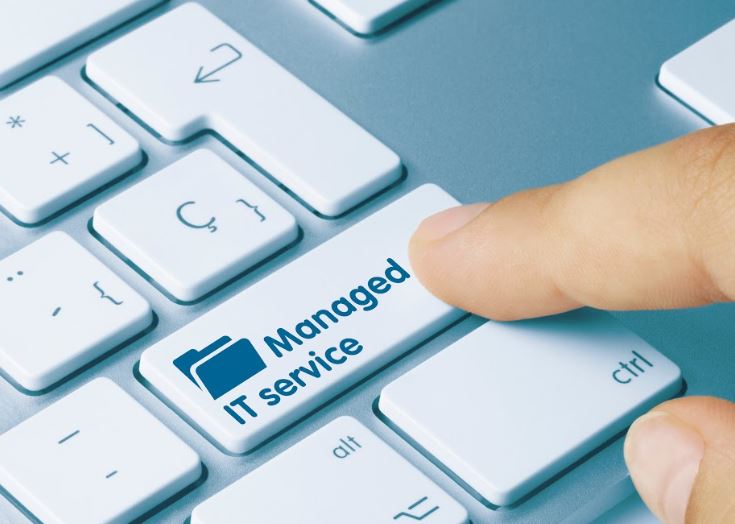- Like
- SHARE
- Digg
- Del
- Tumblr
- VKontakte
- Flattr
- Buffer
- Love This
- Save
- Odnoklassniki
- Meneame
- Blogger
- Amazon
- Yahoo Mail
- Gmail
- AOL
- Newsvine
- HackerNews
- Evernote
- MySpace
- Mail.ru
- Viadeo
- Line
- Comments
- Yummly
- SMS
- Viber
- Telegram
- JOIN
- Skype
- Facebook Messenger
- Kakao
- LiveJournal
- Yammer
- Edgar
- Fintel
- Mix
- Instapaper
- Copy Link
The digital landscape is in a constant state of flux, introducing new technologies and services that compel companies to grapple with the ongoing task of managing their IT infrastructure and software applications while staying competitive.
Companies often find themselves deciding between adopting a managed services model or a Software as a Service (SaaS) approach to ensure their success and growth. Both models allow companies to handle technical domains without the additional costs of installation, maintenance, and a dedicated workforce.
If you’re struggling to choose between these two options, remember that each offers unique advantages but also differs in several ways, impacting operations, costs, and scalability. Understanding these differences is crucial to making the right choice. A great way to start is by seeking out the best IT consulting in Vancouver for guidance.
Understanding Managed Services and SaaS
Managed services involve entrusting your IT management to a third-party provider, which offers bespoke solutions and handles complex IT tasks. This model enables organizations to focus on their core business operations while a managed service provider oversees their IT infrastructure.
SaaS, on the other hand, is a delivery model that leverages cloud-based software hosted by a vendor and is easily accessible online. This model offers convenience through a streamlined approach, automatic updates, and a subscription-based pricing scheme, effectively reducing the need for extensive use of IT resources.

Choosing between managed services and SaaS can be challenging. For a tailored solution for your business, consider consulting top family office advisors for a strategic approach. It’s vital to understand the key differences between these models.
1. Price
Price is a significant factor when choosing between managed services and SaaS. Managed IT services generally cost more but offer benefits such as superior capabilities and solutions that optimize your workflow. Most providers offer a variety of billing options to suit your budget, including per-user, tier-based, per-device, and monitoring-only plans.
SaaS models offer diverse pricing schemes such as flat fee, pay-per-user, tiered, and usage-based options.
2. Security
Managed services provide enhanced security for your company’s data, including continuous remote monitoring, risk assessments, and analytics. This service provides peace of mind by elevating your security measures.
With SaaS, your data is stored in the cloud, reducing your control. However, the advantage is the ability to access the service from any device with an internet connection. Plus, you only pay for what you use rather than upfront for a comprehensive package.
3. Scalability
As businesses grow, their needs change. At some point, the solutions your company invested in may require adjustments or updates.
Managed services shine in this regard, as they can adapt to your changing needs. A reliable provider can handle daily technical issues, maintain networks or systems, and assist with future planning.
SaaS solutions, housed in scalable cloud environments, allow you to adjust the delivery model based on specific needs. Like managed services, SaaS solutions are scalable, allowing the addition of features without further software or server investment.
4. Accessibility
Managed services guarantee consistent performance for any business, with professionals ready to assist at any time.
SaaS models are also readily available anywhere with internet access, offering compatibility with various devices and enhancing mobility.
5. Stability
In terms of stability, managed services shine. A managed service provider ensures constant availability and proactive prevention of issues like potential data breaches.
However, the portability of data in a SaaS model can be a concern. Despite its convenience, it can occasionally be unstable. For instance, you could face a standstill if your SaaS provider mismanages or goes bankrupt – one of the risks of choosing a SaaS solution.
Final Thoughts
Choosing the right model for your company, whether it’s managed services or SaaS, can be challenging. Understanding the key features of both models will guide your decision-making process.
Managed services might be the perfect fit if you’re looking to streamline operations, while SaaS could be the best choice for enhancing efficiency. The specific needs and current status of your company should inform your selection. With the right service, you’ll be well-positioned to achieve success and growth in no time.
In your assessment, consider factors like scalability, cost, customization, and control, too. Managed services offer a more personalized approach, potentially leading to better integration with your existing operations. However, they can be more expensive and less scalable.
SaaS, on the other hand, provides a ready-to-use, scalable solution that might lack the depth of customization but excels in cost-effectiveness. The ultimate decision hinges on balancing these factors against your company’s unique requirements. Prioritize what matters most to your business for a tailored solution that catalyzes growth and success.


